Antarctica is one of the most fascinating continents, but also one of the least understood. That’s why we’ve put together this list with 18 interesting facts about Antarctica, from the volcanoes that lie under the ice to the mysterious blood-red waterfall, but no more spoilers, let’s dive into the full list.
- 1. Antarctica holds 70% of the world’s freshwater
- 2. Antarctica is a continent
- 3. Antarctica is a desert
- 4. Antarctica used to be a green tropical climate with dinosaurs
- 5. There are 9 timezones in Antarctica, but they don't follow the normal rules
- 6. Antarctica is far colder than the Arctic
- 7. Antarctica has 138 volcanoes, including one that's active
- 8. There's a blood-red waterfall
- 9. Antarctica is not owned by anyone and has no government
- 10. Most commercial planes cannot fly over Antarctica
- 11. Antarctica is the windiest continent
- 12. Antarctica has between 1,100 – 5,000 temporary residents at any one time
- 13. Polar nights and midnight sun
- 14. There is no secret Nazi base in Antarctica
- 15. You probably need permission to visit
- 16. There have been 11 births in Antarctica
- 17. Tourism to Antarctica has more than doubled over the past five years
- 18. There are no natural land mammals
1. Antarctica holds 70% of the world’s freshwater
Antarctica is made up of two large ice sheets, known as East Antarctica and West Antarctica. These ice sheets can be up to 5km (3 miles) deep and contain 90% of all the ice on Earth and 70% of all the fresh water on Earth1 (source: National Science Foundation).
If all the ice in Antarctica were to melt, it would raise sea levels by around 60m. This would result in the loss of many major cities such as London and Bangkok, the entire loss of Florida, and entire countries would be underwater including the Netherlands, Demark, and Bangladesh.
2. Antarctica is a continent
Underneath the two ice sheets that we are familiar with is a large landmass that sits on the Antarctic tectonic plate which is why we classify Antarctica as a continent under the 7 continent model taught by most English-speaking schools.
The basic definition of a continent is generally “a large, continuous, discrete masses of land, ideally separated by expanses of water”2 (source: The Myth of Continents, M. W. Lewis and K Wigen, 1997).
Antarctica has all of these characteristics and also has unique geography and unique vegetation which are also key determinants of a continent. In fact, given that Antarctica is 14.2 million km2, it’s the fifth biggest continent on Earth, larger than Australia and Europe.
This is in contrast to the Arctic which is not classified as a continent since it is mostly made up of floating sea ice with no landmass underneath.
Despite being a continent, there are no countries or cities in Antarctica, but more on this in fact number 12.
3. Antarctica is a desert
It’s generally agreed that a desert is a place that receives less than 250mm (10 in) of precipitation per year3 (source: Essentials of Geology, 3rd ed, Marshak, 2009).
Since Antarctica receives an average of 150mm of precipitation per year across the continent, it can be classified as a desert4 (source: Australian Antarctic Program).
However, it’s not the type of desert that you would typically imagine, it’s an ice desert.
But with a total area of 14.2million km2 (5.5million sqm), Antarctica is the largest desert on Earth, closely followed by the Arctic which is also an ice desert5 (source: CIA Factbook).
4. Antarctica used to be a green tropical climate with dinosaurs
Long before humans had evolved, Antarctica was part of a super-continent called Gondwana along with modern-day Australia, Africa, South America, India, and Arabia.
At this time, Antarctica was tropical with high temperatures and vegetation much like that found in the Amazon rainforest.
There is also evidence that dinosaurs roamed Antarctica during the Jurrasic period with an Ankylosaurus, a Hypsilophodon, and a Hadrosaurus among fossils found there6 (source: J. Francis, Victoria University of Wellington YouTube Channel).
The break-up of Gondwana took place over a long period and around 33 million years ago Antarctica finally broke away from Australia and took its place over the South Pole7 (source: Wet Tropics Management Authority).
Read our full article to find out more about the formation of Antarctica and its natural history.
5. There are 9 timezones in Antarctica, but they don’t follow the normal rules
Technically speaking, Antarctica sits across every time zone8 (source: P.A.Berkman, Science Into Policy, 2002), however, this would not be useful in practice since you could walk through time at the south pole (although that does sound quite cool).
Instead, TZ database (the people in charge of time zones), split Antarctica into 9 time zones which are loosely based on the original territorial claims. This is different from the rest of the world which splits time zones into 24 equal parts and then accounts for country boundaries.
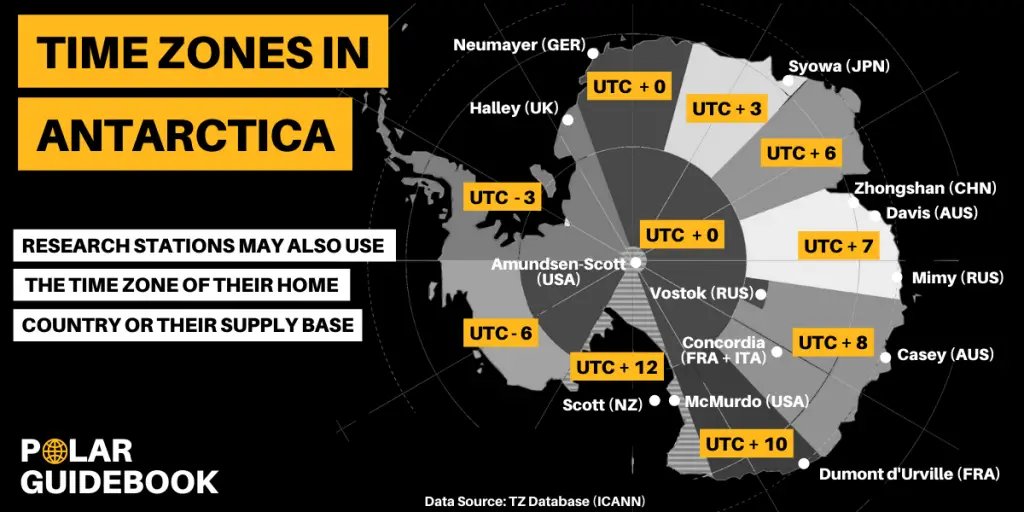
However, even with the time zones, a lot of the research bases don’t actually use them. Instead, they often use the time zone of their home country or a supply base for better coordination.
For example, the USA research base McMurdo uses New Zealand time since all personnel and supplies are flown from Christchurch, New Zealand.
6. Antarctica is far colder than the Arctic
Although there are many similarities between the Arctic and Antarctica, including the fact that they are both polar deserts, Antarctica is actually much colder than the Arctic.
Antarctica is the coldest continent on Earth with average annual temperatures ranging from around −10 °C on the coast to −60 °C inland. In the most extreme parts of the continent, temperatures can drop below -80°C in winter9 (source: Australian Antarctic Program).
Meanwhile, in the Arctic, temperatures typically vary from −35 °F (−37 °C) in the winter up to 10 °C (50 °F) in summer, just enough to melt the ice and allow basic vegetation to grow.
The reason that Antarctica is so much colder is largely due to the Antarctic Circumpolar Current which is the largest ocean current. It circulates right around the continent, cutting it off from warmer waters from the north.
7. Antarctica has 138 volcanoes, including one that’s active
According to recent studies that have analyzed the landmass beneath the ice using ice-penetrating radar, Antarctica is home to 138 volcanoes, ranging in height from 100m to over 4,000m above sea level10 (source: M. van Wyk de Vries, et al., Geological Society Special Publications, Vol. 461, 231-248, 2017).
Most of these can be found in West Antarctica which makes it one of the densest volcanic regions in the world.
However, only 1 of the 138 Antarctic volcanoes is currently active. This is Mount Erebus which is 3794m (12,447ft) tall and continues to erupt to this day.
A second active volcano can be found in the South Shetland Islands, just off the coast of mainland Antarctica. Known as Deception Island, the entire island is the caldera of a volcano with one of the sides fallen in which means that it’s the only place in the world where ships can sail into an active volcano11 (source: NASA Earth Observatory).
8. There’s a blood-red waterfall
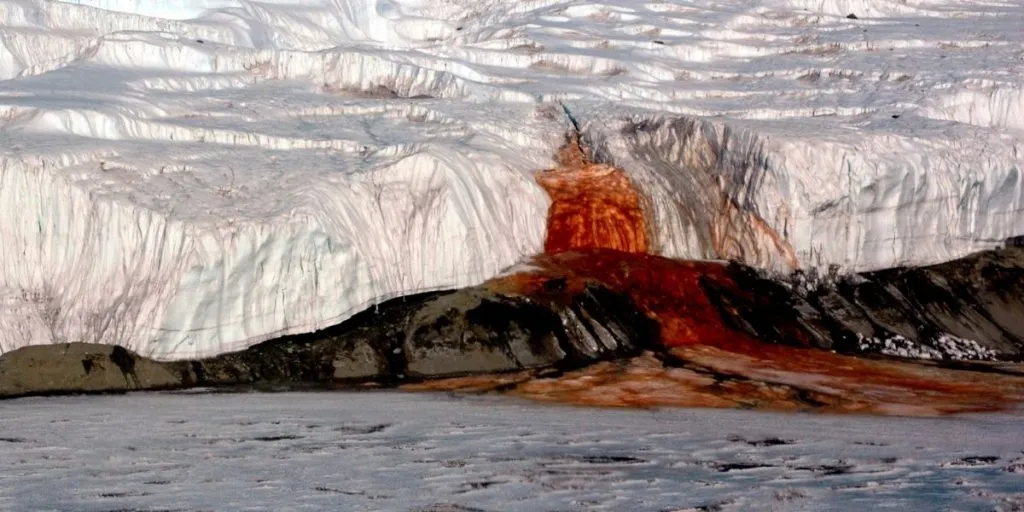
Although we might associate Antarctica with white landscapes, it’s actually home to a unique blood-red waterfall, cleverly named blood falls, in McMurdo Dry Valleys of East Antarctica.
The waterfall contains brine, which is water with a high concertation of salt (even saltier than the sea). It comes from a sub-glacial lake underneath Taylor Glacier.
As well as being super salty, the water is high in iron which turns red when it comes into contact with air12 (source: SCAR). Hence, the name blood falls.
9. Antarctica is not owned by anyone and has no government
Antarctica is not owned by anyone. Up until 1961, seven countries had laid territorial claims to the continent (Argentina, Australia, Chile, France, New Zealand, Norway, and the United Kingdom).
However, it is now governed by the Antarctic Treaty which sets aside any sovereignty disputes between signatories and stops anyone from placing new claims or expanding existing claims.
There have been many additions to the treaty, most notably the Environmental Protocol which designates it as a “natural reserve, devoted to peace and science” and prevents any military activity.
Although there are no official laws or a government, those visiting the continent will be subject to the laws of their own country or the country that gave them permission to visit.
10. Most commercial planes cannot fly over Antarctica
For some routes, such as Argentina to Australia, it would make the most sense to pass directly over the most southerly part of the world. However, no commercial airlines fly over Antarctica, despite more than 5,000 flights passing over the north pole each year13 (source: NASA).
Whilst there is a lot of red tape that airlines would need to address to pass over the Antarctic, the main thing preventing such a route is called ETOPS (Extended-range Twin-engine Operations Performance Standards).
Under this regulation, every aircraft and airline is given an ETOPS rating which states how far they can be from a diversion airport in case something goes wrong with one of the engines, allowing them to still land safely14 (source: Sheffield School of Aeronautics).
Although ETOPS ratings are increasing as the reliability of technology improves, the current maximum is ETOPS-370 which means that the plane cannot be any further than 370 minutes from a diversion airport at any time during the flight.
Since the southernmost continent has no diversion airports for aircraft, most commercial flights have to avoid Antarctica and stay closer to Africa, South America, and Australia.
11. Antarctica is the windiest continent
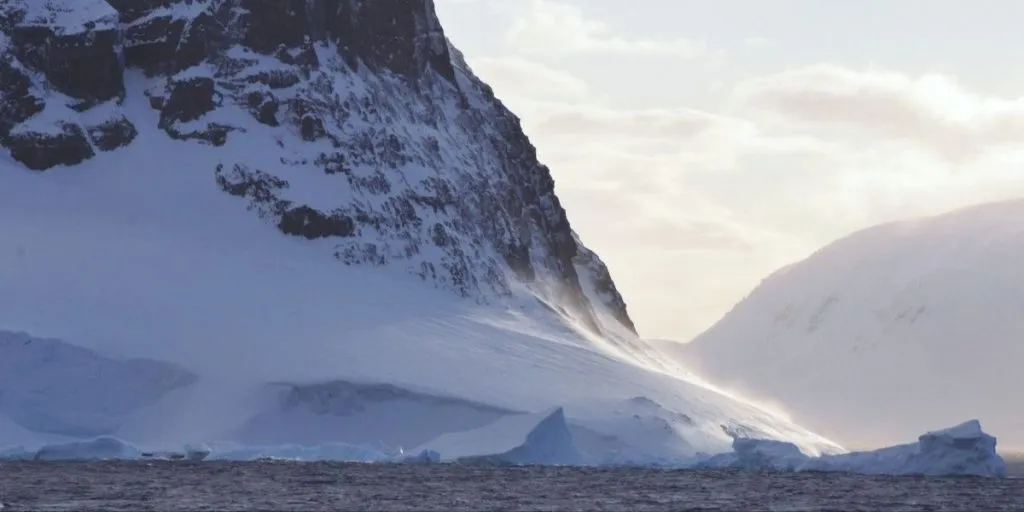
Antarctica is the windiest continent on Earth. This is due to a special type of wind known as katabatic wind which is caused when cold, dense air flows down slopes from high altitudes due to gravity.
Although these winds are found in many places, including California and Japan, those in Antarctica are the fastest on Earth15 (source: Guinness World Records).
The highest wind speed recorded in Antarctica was 327km/h (199 mph), this was in 1972 at the French research base, Dumont d’Urville16 (source: Ice Cube Nutrino Observatory).
12. Antarctica has between 1,100 – 5,000 temporary residents at any one time
Although nobody lives in Antarctica permanently due to its isolation from the rest of the world and its inhospitable environments, there are usually between 1,1000 and 5000 people living on the continent at any one time17 (source: CIA Factbook).
The people are from at least 30 different countries with the largest populations from the United States, Argentina, and Chile.
However, there are no cities or towns in Antarctica, so these inhabitants live on the 99 research bases on the continent (62 seasonal and 37 permanent). There are also about 1,000 people stationed on nearby ships including their crew.
13. Polar nights and midnight sun
Most of Antarctica sits south of the Antarctic Circle (an imaginary line around the world at 66°30′ S). This means that it experiences a natural phenomenon called polar nights which is when the sun does not set for more than 24 hours at a time.
It occurs because the Earth rotates on a tile of 23.44° relative to our orbital plane (if there was no tilt). It also occurs above the Arctic Circle which is the north polar region.
Due to the tilt, the north and south polar regions are totally obscured from the sun for large parts of the year. The shortest polar nights are experienced just below the Antarctic circle and they get longer as you move further south. At the south pole, you would experience 6 months of darkness.
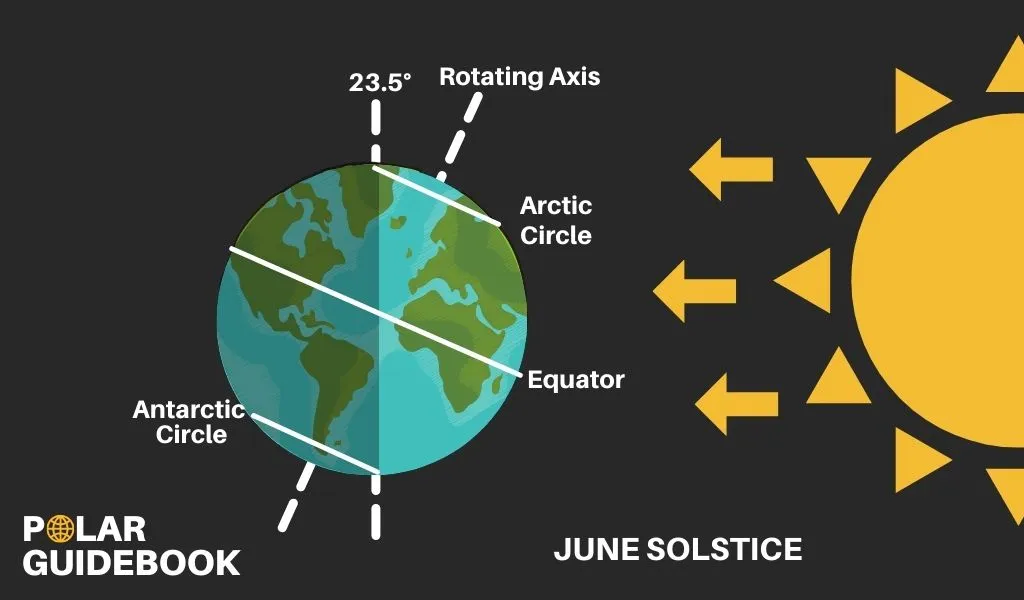
The opposite also happens, when the sun does not set for more than 24 hours at a time which causes daylight at night. This is known as a polar day but is more commonly referred to as midnight sun.
Antarctica experienced midnight sun between November and January. For those of you that would like to go yourselves, we would recommend December to February as the best time to visit Antarctica for good weather and wildlife spotting opportunities.
14. There is no secret Nazi base in Antarctica
We can already hear the cries of conspiracy theorists around the world, but we can reveal that there is no secret Nazi base in Antarctica and never was.
The claims are based on events that did take place and can sometimes be compelling, but there are less exciting truths behind them as two scientists revealed in a research paper.
Firstly, there was a German Antarctic expedition just before the second world war, however, it was to scout out potential whaling locations since the whaling industry provided essential supplies and ingredients for bomb-making.
Secondly, there were several nuclear explosions in Antarctica by the United States, however, these weren’t to blast Hitler’s secret base, they were training exercises as cold war tensions rose.
This isn’t the only crazy idea, see our full article for more conspiracy theories about Antarctica.
15. You probably need permission to visit
If reading all of these interesting facts about Antarctica has made you keen to visit the continent, you’re going to need permission before stepping foot there.
Although you don’t need a visa or a passport to visit since it has no government and therefore no immigration control, if you’re a citizen of a country that has signed the Antarctic Treaty or you will be passing through one of those countries, you will need permission to go.
Luckily, if you’re visiting as a tourist, most tour operators will ask for permission on your behalf so there’s nothing to worry about.
However, there is a bit of a loophole. If you are a citizen of a country that hasn’t yet signed the treaty and you manage to find a way to visit without passing through one of those countries, you could technically visit without permission.
However, you’d have a pretty unhappy time, see our full guide to visiting Antarctica without permission to find out why we wouldn’t recommend it.
16. There have been 11 births in Antarctica
For a country that has no permanent residents, it’s surprising to find out that the continent has been home to 11 births since these don’t happen unexpectedly.
The first person born in Antarctica was Emilio Marcos Palma Morella who was the son of the Captain of an Argentine base18 (source: The Guinness Book of Records, 1986, p.17).
At the time, there was tension between Argentina, Chile, and the UK whose claimed territory overlapped. So Argentina decided that having a child born there would support their claim.
Chile responded by having a child conceived and born on the continent. This continued until 11 children had been born on the continent.
17. Tourism to Antarctica has more than doubled over the past five years
During the 2014-2015 tourist season, there were 36,702 visitors to the continent, this rose to 73,991 in the 2019-2020 season. This represents a 102% increase in people visiting the continent19 (source: International Association of Antarctica Tour Operators).
There’s a large number of tour operators now offering Antarctic expedition cruises ranging from cruise-only packages to deep exploration of the continent. As the IAATO points out, around a quarter of those that visited the continent did so as part of a cruise-only package.
For those that do set foot on the continent, there’s a growing range of activities to do in Antarctica, including kayaking, running a marathon, and penguin spotting.
Certain packages might even include a visit to one of the research bases to drink vodka or a stay at the luxury hotel that was recently constructed.
But these trips don’t come cheap, a trip to Antarctica can cost anything from $7,000 up to $40,000 per person once you account for all of the pre and post-adventure travel costs, expect this cost to double for the luxury hotel.
18. There are no natural land mammals
There’s an old south pole joke that goes; ‘What do you call a polar bear at the south pole? Lost.’ The reason it’s funny is because it’s actually quite accurate. There are no naturally occurring land mammals, reptiles or amphibians in Antarctica20 (source: British Antarctic Survey). And despite a common misconception, polar bears live in the Arctic, not Antarctica.
There is, however, a thriving population of birds, most notably penguins, which use the lack of any land predators to their advantage when breeding. There are also many fish and a large population of marine mammals such as whales and seals.
Although there are no natural land mammals, they are not totally absent. There are many that humans have introduced to the continent, sometimes by accident or sometimes purposefully. Over time, these have included rodents such as rats and mice, rabbits, cats, sheep, pigs and cattle. Their presence can have a catastrophic impact on the natural wildlife of the continent.


![You are currently viewing 18 Ice-Cool Facts About Antarctica [You Probably Didn’t Know]](https://polarguidebook.com/wp-content/uploads/2022/04/Facts-about-Antarctica.jpg)
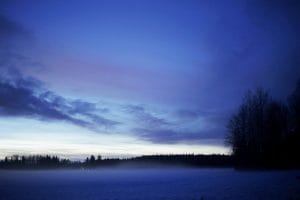
![Read more about the article Arctic vs Antarctica [12 Key Similarities and Differences]](https://polarguidebook.com/wp-content/uploads/2021/07/Arctic-vs-Antarctica-300x176.jpg)
![Read more about the article How Was Antarctica Formed? [+ Other Questions About Its Natural History]](https://polarguidebook.com/wp-content/uploads/2022/03/How-Was-Antarctica-Formed-300x150.jpg)